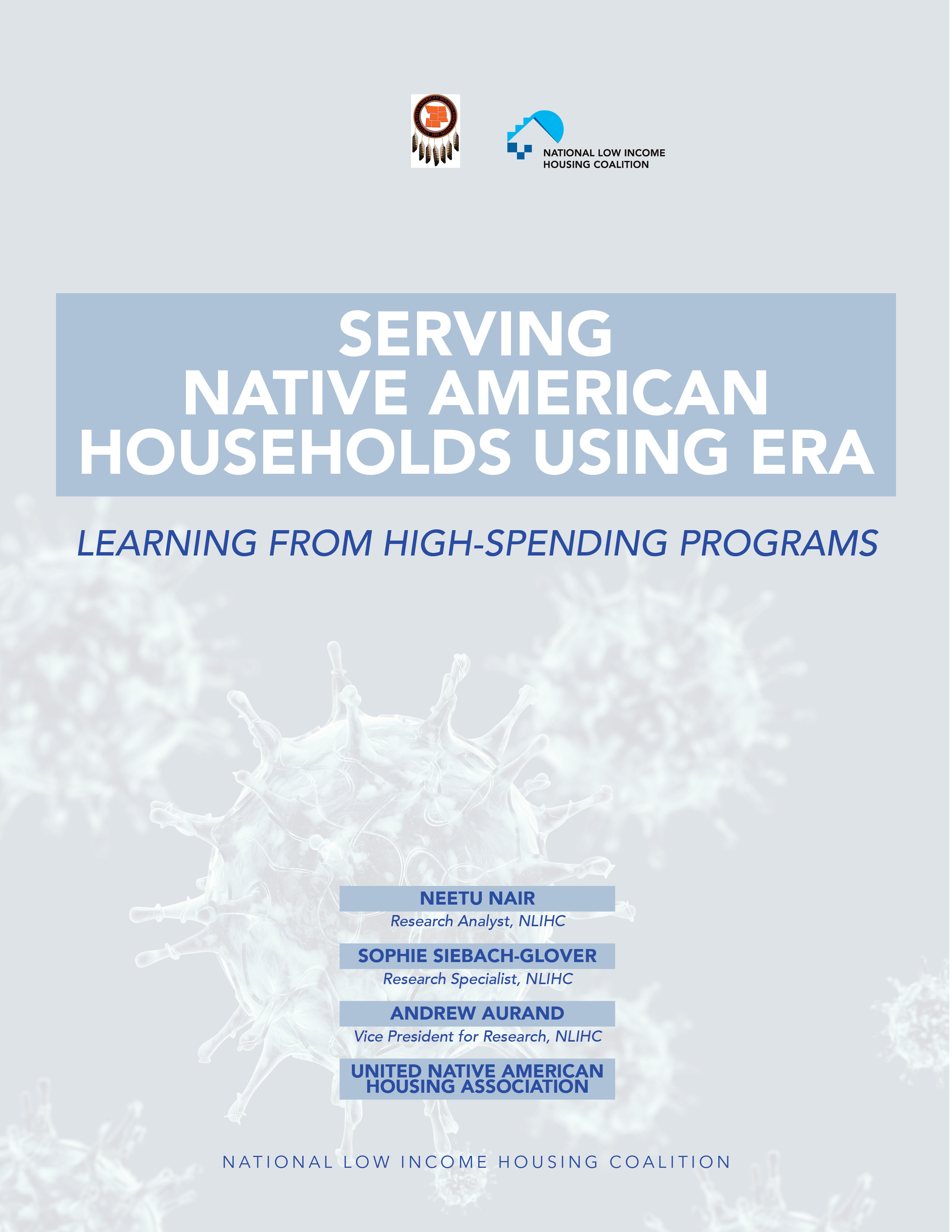New Report! Serving Native American Households Using ERA: Learning from High-Spending Programs
Dec 01, 2022
NLIHC and the United Native American Housing Association (UNAHA) released today a new report, Serving Native American Households Using ERA: Learning from High-Spending Programs. The report investigates the unique characteristics of high-spending emergency rental assistance (ERA) programs administered by Native American Tribes or Tribally Designated Housing Entities (TDHEs).
Despite challenges like limited rental housing, low administrative capacity, a short spending timeline, and in many cases small ERA allocations, Tribes and TDHEs have had varying levels of success in administering their ERA programs. More than half of the initial ERA1 allocation to Tribes and TDHEs – approximately $411.6 million – had been spent by March 2022, and nearly two of every five tribal grantees received additional funds between September 2021 and April 2022 through reallocation, indicating that these grantees had spent a large portion of their initial funds.
The new report finds that high-spending Tribes and TDHEs adopted the following strategies to effectively distribute rental assistance and serve low-income Native American households:
- TDHEs used ERA to temporarily address overcrowding – a long-standing issue on native lands – by covering a combination of relocation expenses, security deposits, and three months of future rent. Administrators also worked with local hotels and motels in their areas to temporarily house people experiencing homelessness or overcrowding and help them transition to more stable housing in the long term.
- Unlike most other federally funded housing programs for Native American communities, ERA allowed TDHEs to take advantage of available resources to serve non-tribal members on native lands and previously underserved Native American members living outside their standard service areas.
- TDHEs leveraged existing relationships and created new partnerships to conduct outreach to Native American households around the country.
- Administrators utilized many of the Treasury ERA program’s documentation flexibilities, such as self-attestation, to promote application accessibility.
The report finds that while ERA was successful in mitigating some of the financial shock experienced by Native Americans as a result of the pandemic, the program also makes evident the need for long-term financial support for those living both on and off native lands.
Read the report here.
